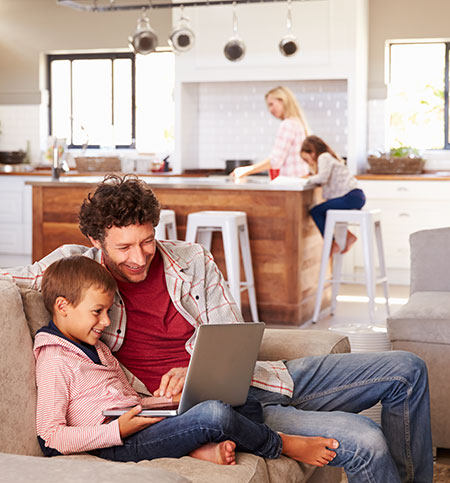
Carbon monoxide sources in homes often are cooking or heating equipment like stoves, fireplaces, generators or furnaces.
Carbon monoxide poisoning takes more than 400 lives in the U.S. each year, according to Centers for Disease Control and Prevention. Another 50,000 people visit the emergency department.
With precautions, you can protect you, family and pets from the “invisible killer.”
What is carbon monoxide?
Many refer to it as the invisible killer because it’s just that – an odorless, colorless, poisonous gas. Carbon monoxide sources in homes often are cooking or heating equipment like stoves, fireplaces, generators or furnaces. It also can come from vehicles or small engines.
“Anything that burns fuel can be a source of carbon monoxide if it is not correctly vented,” said Britt Bilgrien, a Marshfield Clinic Health System family medicine nurse practitioner.
In vehicles, carbon monoxide comes from defective exhaust and emission systems, holes in the car body, trapped gases in truck toppers or operation in an enclosed area, like a garage or snow bank.
What are symptoms of carbon monoxide poisoning?
Consumer Product Safety Commission describes initial symptoms similar to the flu, but without fever:
- Headache
- Fatigue
- Shortness of breath
- Nausea
- Dizziness
Symptoms progress to:
- Mental confusion
- Vomiting
- Loss of muscular coordination
- Loss of consciousness
- Death
“If carbon monoxide level is severe, you can experience the latter symptoms before ever experiencing the former,” Bilgrien said.
Safety precautions in your home
The first, best step to protect your home against carbon monoxide poisoning is to purchase carbon monoxide detectors. The safest strategy is to put a detector:
- In a central location in the home.
- Outside of each sleeping area.
- On every level of the home.
Test your alarms once a month. If an alarm does sound, immediately move outside and call 911.
After a snowstorm, check that stove, dryer, fireplace and furnace vents are clear.
Safety precautions with vehicles
Do not warm a vehicle (or other fueled engine) in a garage, even with doors open. Move it outside.
Check the exhaust pipe of a started vehicle is not snow covered.
“Winter is a risky time for carbon monoxide poisoning,” Bilgrien said. “Educate yourself on symptoms, take the right precautions and you’ll be in the clear.”


Carbon Monoxide almost killed my wife and I a few years ago. We were sleeping with the power out of service our whole house generator was doing its job. The person that installed the generator a couple of years before was not qualified, and he almost killed us. Fortunately, we had installed detectors on the first floor and in the basement. The one at the bottom of the stairs in the basement woke us up screaming. We thought that it was a smoke detector at first; we tried resetting it to no avail; my wife was at the top of the steps and we were talking when the detector in the dining area behind her went off. We immediately got dressed and went to a hotel. The generator was still running the next day when we beat the fire department to the house. The fire department said the levels of monoxide could have killed us in our sleep. Needless to say, we don't have the installer perform ANY tasks for us. Carbon Monoxide is heavier than smoke, and I would suggest installing smoke detectors high and monoxide detectors low. As far as I'm concerned, the combination detectors are useless.
We are so glad you and your wife are okay, Terry. Thank you for sharing your story. -Kirstie